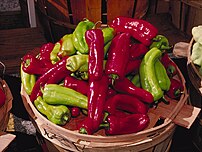Botanical Name: Rubus fructicosus
GAELIC NAME : Sméar.
LATIN NAME : Rubus villosus.
Kingdom: Plantae
Division: Magnoliophyta
Class: Magnoliopsida
Order: Rosales
Family: Rosaceae
Subfamily: Rosoideae
Genus: Rubus
Subgenus: Rubus (formerly Eubatus)
COMMON / FOLK NAMES : Bramble, Cloudberry, Dewberry, Goutberry, High Blackberry, Thimbleberry, Bly, Bramble-kite, Bumble-kite. Rubus fructicosus
Other names: Bramble, brymbyl, bumble-kite, brameberry, brambleberry.
Parts used: Blackberry leaves, bark and root can be used to make tea. The blackberries (fruits) are also eaten and used in fruit juice and jams.
Habitat:Blackberry is native to Europe (mainly Mediterranean region) and is cultivated in many countries with moderate climate. There exist various cultivars which produce larger berries.
DESCRIPTION : Blackberry is a trailing perennial plant that grows in dry or sandy soils. The slender branches feature sharp, recurved prickles. The leaves are finely hairy or almost glabrous and pinnate with 3 to 5 leaflets. The leaflets are ovate and doubly serrate. The upper leaves are sometimes simple and palmately lobed.
click to see the pictures.>....(01).......(1)…….(2)..…...(3).……..(4)..………………..
FLOWERING PERIOD : The white, five-petaled flowers appear from June to September. The fruit is an aggregate of black druplets collectively called the Blackberry.
Phytochemicals: Blackberry leaves contain Tannins, Gallotannins, Dimeric Ellagitannins and Flavonoids. Blackberries (fruits) are exceptionally rich in phytochemicals mainly, Flavonoids, Anthocyanins, Cyanidin, Ellagic Acid.
Cultivation and some general uses:
Primary cultivation takes place in the North American State of Oregon located in the United States of America. Recorded in 1995 and 2006: 6,180 to 6,900 farmed acres of blackberries, producing 42.6 to 41.5 million pounds, making Oregon the leading blackberry producer in the world.
The soft fruit is popular for use in desserts, jams, seedless jellies and sometimes wine. Since the many species form hybrids easily, there are many cultivars with more than one species in their ancestry.
Blackberry flowers are good nectar producers, and large areas of wild blackberries will yield a medium to dark, fruity honey.
The blackberry is known to contain polyphenol antioxidants, naturally occurring chemicals that can upregulate certain beneficial metabolic processes in mammals. The astringent blackberry root is sometimes used in herbal medicine as a treatment for diarrhea and dysentery.[5] The related but smaller European dewberry (R. caesius) can be distinguished by the white, waxy coating on the fruits, which also usually have fewer drupelets. (Rubus caesius) is in its own section (Caesii) within the subgenus Rubus.
In some parts of the world, such as in Australia, Chile, New Zealand and the Pacific Northwest region of North America, some blackberry species, particularly Rubus armeniacus (syn. R. procerus, ‘Himalaya’) and Rubus laciniatus (‘Evergreen’) are naturalised and considered an invasive species and a serious weed.
As there is forensic evidence from the Iron Age Haraldskær Woman that she consumed blackberries some 2500 years ago, it is reasonable to conclude that blackberries have been eaten by humans over thousands of years.
PROPERTIES : Astringent, Tonic.
Nutrients and antioxidant qualities:
Blackberries are notable for their high nutritional contents of dietary fiber, vitamin C, vitamin K, folic acid – a B vitamin, and the essential mineral, manganese (table)
Blackberries rank highly among fruits for antioxidant strength, particularly due to their dense contents of polyphenolic compounds, such as ellagic acid, tannins, ellagitannins, quercetin, gallic acid, anthocyanins and cyanidins.
Blackberries have an ORAC value (oxygen radical absorbance capacity) of 5347 per 100 grams, including them among the top-ranked ORAC fruits. Another report using a different assay for assessing antioxidant strength placed blackberry at the top of more than 1000 antioxidant foods consumed in the United States.
Nutrient content of seeds:
Blackberries are exceptional among other Rubus berries for their numerous, large seeds not always preferred by consumers. They contain rich amounts of omega-3 (alpha-linolenic acid) and -6 fats (linoleic acid), protein, dietary fiber, carotenoids, ellagitannins and ellagic acid.
Medicinal Uses: Blackberry leaves are traditionally used for the treatment of burns and scald. Tea from blackberry (leaves, root and bark) is astringent and used against intestinal disorders such as diarrhoea and dysentery. Prolonged use of the tea is also beneficial for enteritis, chronic appendicitis, and leucorrhoea. Chewing of fresh blackberry leaves helps to heal bleeding gums and inflammation of the mouth and troat.
The anthocyanins in blackberries are responsible for the potential anti-carcinogenic properties. The chemopreventive effects of fresh blackberries is caused by their antioxidant properties. Flavonoids strengthen the blood vessels and capillaries.
. It is said to have expectorant properties as well. A tea made from the dried root can be used for dropsy. The chewing of the leaves for bleeding gums goes back 2000 years.
Other facts: From the blackberry juice a very nice red wine can be produced.
Beliefs, Superstition and myths:
Blackberry was considered to be sacred to the Pagan deities of Europe, and was widely used in worship.
A bramble bush that forms a natural arch is a great aid to magical healing. On a sunny day, crawl through the arch backwards and then forward three times, going as nearly east to west as possible. This will cause boils, rheumatism, whooping cough and even blackheads to disappear. The blackberry leaves are used in spells of wealth, as are the berries themselves, and the vines are protective if grown.
The blackberry plant is also used to heal scalds by dipping nine blackberry leaves in spring water and then laying them against the wound gently, while saying the chant three times to each leaf (27 times in all)
Three ladies came from the east.
One with fire and two with frost.
Out with fire, in with frost.
This is an old invocation to Brigit , the Celtic Goddess of poetry, healing and Smithcraft.
Disclaimer:The information presented herein is intended for educational purposes only. Individual results may vary, and before using any supplements, it is always advisable to consult with your own health care provider
Resources:
http://en.wikipedia.org/wiki/Blackberry
http://www.shee-eire.com/Herbs,Trees&Fungi/Herbs/Blackberry/Factsheet1.htm
http://www.phytochemicals.info/plants/blackberry.php










![Reblog this post [with Zemanta]](https://i0.wp.com/img.zemanta.com/reblog_e.png?w=580)










